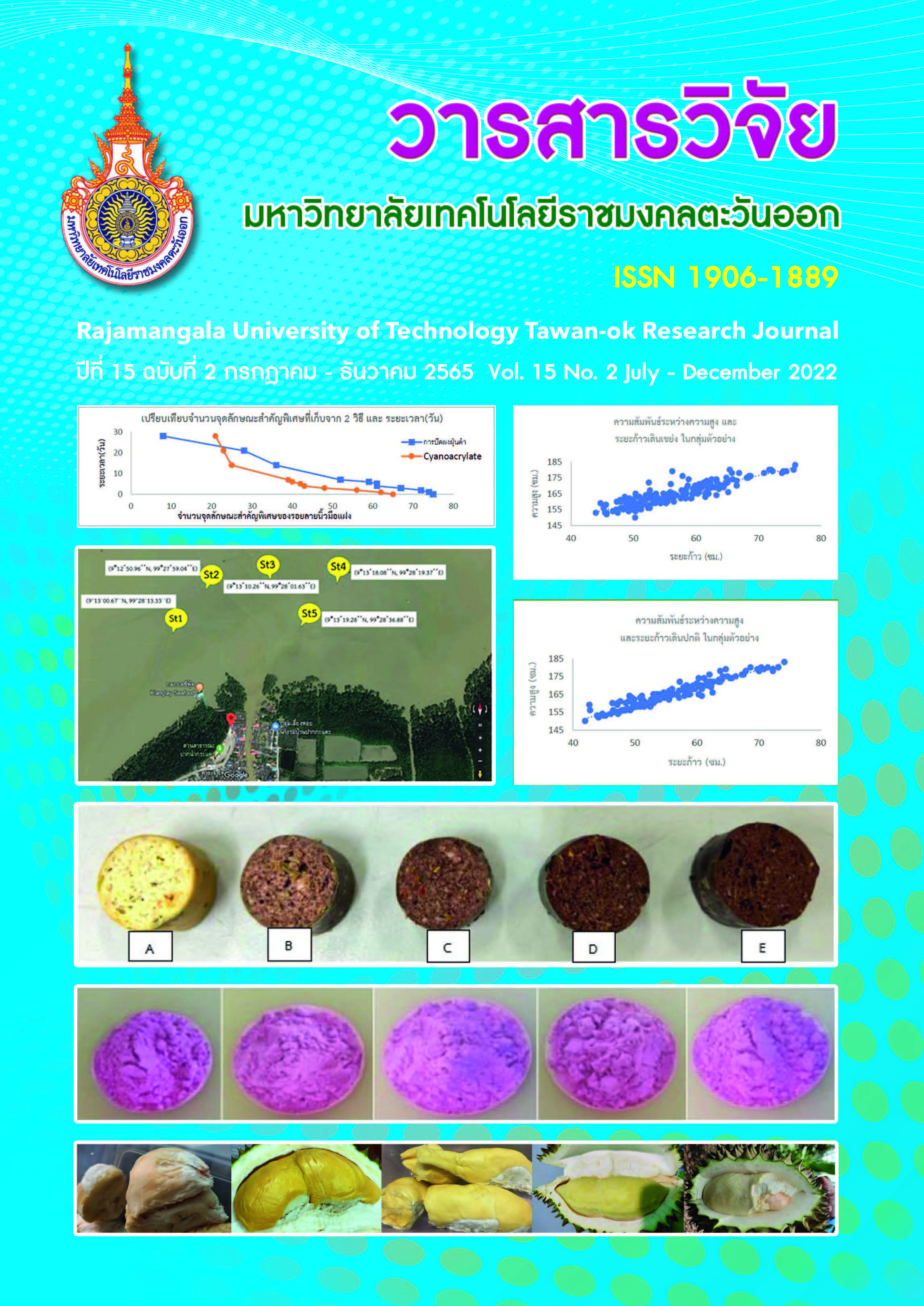The relationship between time period of fingerprints being imprinted on zip-lock plastic bags and latent fingerprint minutiae extracted using black powder and cyanoacrylate technique
Main Article Content
Abstract
The study aims to 1) to make a comparison between latent fingerprint extracted from zip-lock bags and black powder and Cyanoacrylate techniques 2) to examine the relationship between imprinting fingerprints time period and latent fingerprint minutiae extracted using black powder and Cyanoacrylate techniques. This study was experimental research: Static Group Comparison on developing latent fingerprints from zip-lock bags by black powder and Cyanoacrylate on 28 days (divided into 0,1,2,3,4,5,6,7,14,21 and 28 days). Descriptive Statistics: Frequency, Percentage, Mean, Maximum, Minimum and Standard deviation were used to describe attributes of a database. Inference Statistics: paired samples t-test and Pearson’s correlation coefficient and Linear Regression analysis.
The results showed that 1) Developing latent fingerprint extracted from zip-lock bags using black powder and Cyanoacrylate collect latent fingerprint minutiae. The result revealed that using black powder is better than Cyanoacrylate analyzed with 0.05 statistical significance. The means of black powder=53.64 and Cyanoacrylate =42.00. 2) Developing latent fingerprint extracted from zip-lock bags using black powder (0 to 28 days) was r=0.990 (at very high level) predict percentage of imprinting fingerprints time=98.0 and the predicted equation was y = 30.535 – 0.415x. Cyanoacrylate (0 to 28 days) was r=0.894 (at high level) and also predict percentage of imprinting fingerprints time=80.0 and the predicted equation was y = 54.437 – 1.503x. The equation was divided into two parts, the first part at 0-14 days was r=0.941 (at very high level) and predict percentage of imprinting fingerprints time=88.5; the predicted equation was y = 19.261 – 0.313x. The last part at 14-28 days was r = 0.998 (at very high level) and predict percentage of imprinting fingerprints time=99.6; the predicted equation was y = 91.230 – 3.098x.
Article Details

This work is licensed under a Creative Commons Attribution-NonCommercial-NoDerivatives 4.0 International License.
References
Adelila, S. 2018. Comparison between latent fingerprint identification using black powder and cyanoacrylate glue. Asian Journal of Chemistry, 30(12), 2615-2620.
Aroonsangthong, A. 2020. The Comparative Study of the Appearance of Latent Fingerprint on Leather by Using Superglue Method, Faculty of Forensic Science, Royal Police Cadet Academy. (in Thai)
Cadd, S. 2015. Fingerprint composition and aging: A literature review. Science & Justice, 55(4),219-238.
Hinkle, D.E. 1998. Correlation: A measure of relationship. Applied statistics for the behavioral sciences, 4(1), 105-131.
Pahade, N.K. 2015. A literature on development of latent fingerprint by small particle reagent. The International Journal of Science and Techno ledge, 3(5), 105.
Paramakul, E. 2018. The Experimental Study of Latent Fingerprints’Stability on Black Garbage bag (Thin type) by Superglue Fuming and Rhodamine-6G Dyeing, Master of Science Program in Forensic Science graduate School, Suansunandha Rajabhat University. (in Thai)
Wongsongja, N. 2019. Comparison of stability latent fingerprint on plastic. International Academic Multidisciplinary Research Conference in Amsterdam 2019.
Yamashita, B. 2010. Fingerprint Sourcebook-Chapter 7: Latent Print Development. In: US Dept. of Justice, Office of Justice Programs, National Institute of Justice.


